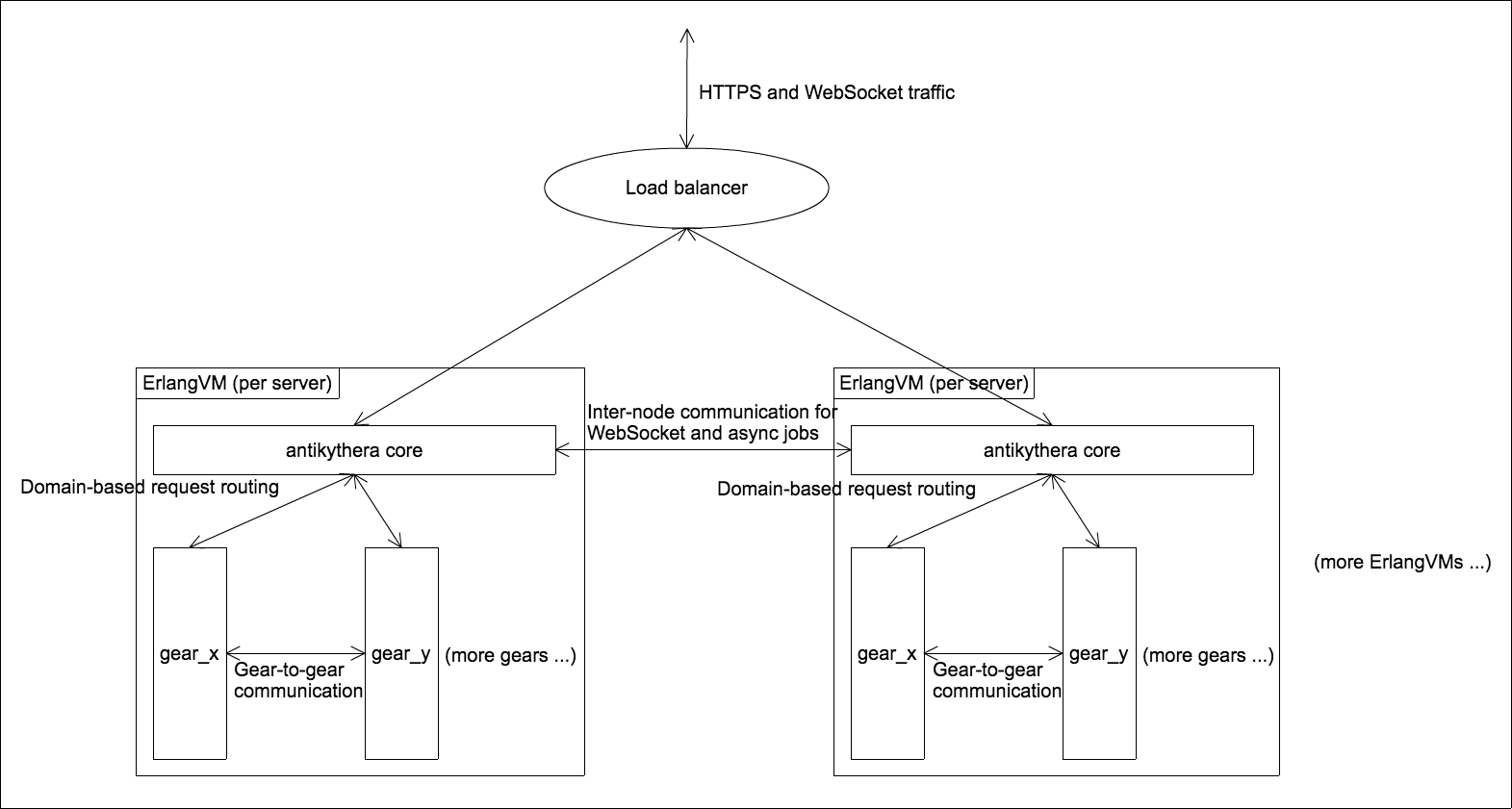Antikythera is an Elixir framework to build your own in-house PaaS (Platform as a Service).
You can run multiple web services while managing only a single cluster of ErlangVM nodes. From the viewpoint of service developers antikythera provides FaaS(Function as a Service)-like development experiences.
Note: Antikythera is already used in production at ACCESS, though as an OSS, it is still in early development stage and missing many components. Please be aware of that, and stay tuned for further additions!
- As a platform for multiple services:
- Resource control for multi-service and multi-tenant use cases
- Automated deployment without affecting other running services
- Built-in logging, monitoring and configuration management
- Service-to-service communications without network overhead
- As a web framework:
- HTTP request processing with arbitrary Elixir code with WebSocket support
- Domain-based routing for multiple services; path-based routing within single service
- CDN support for static contents, HAML template for dynamic web pages
- As an asynchronous job executor:
- Built-in distributed job queues
- Running arbitrary Elixir code for each job
- We refer to each antikythera cluster as an "antikythera instance",
and each web service running within an antikythera instance as a "gear".
- Antikythera Instance example: antikythera_instance_example
- Gear example: testgear
- These two projects are also used for antikythera's test.
- Antikythera is heavily dependent on the power of ErlangVM.
- Antikythera is written in Elixir, and all gears must also be written in Elixir.
- Multiple gears are co-located and executed within the same ErlangVMs of an antikythera instance.
- This type of co-location of multiple applications are sometimes referred to as "nano-services architecture".
- This way we can eliminate the infrastructure/operational cost for having multiple web application stacks.
- Also, inter-service communications in a micro-services architecture become gear-to-gear communications in this nano-services architecture. Unlike micro-services architecture, it doesn't require network roundtrip as all gears are running within a single ErlangVM, resulting in lower communication overhead.
- Although gears share the same computing resources, they are executed in an independent manner thanks to the Erlang's process model.
- Antikythera instance and its gears are all separate mix projects.
- Developers of different gears can work on their own projects, independently.
- Library dependencies are defined per-antikythera-instance, and all gears inherit those dependencies.
See our Getting Started guide!
- For antikythera instance administrators (TBD)
- For gear developers (i.e. developers of web services)
- API Reference
We encourage you to contribute to antikythera! Please check out our Contributing Guide.
For both core and gear development, please make use of our Style Guide.
Copyright(c) 2015-2022 ACCESS CO., LTD. All rights reserved.
Antikythera source code is licensed under the Apache License version 2.0.

